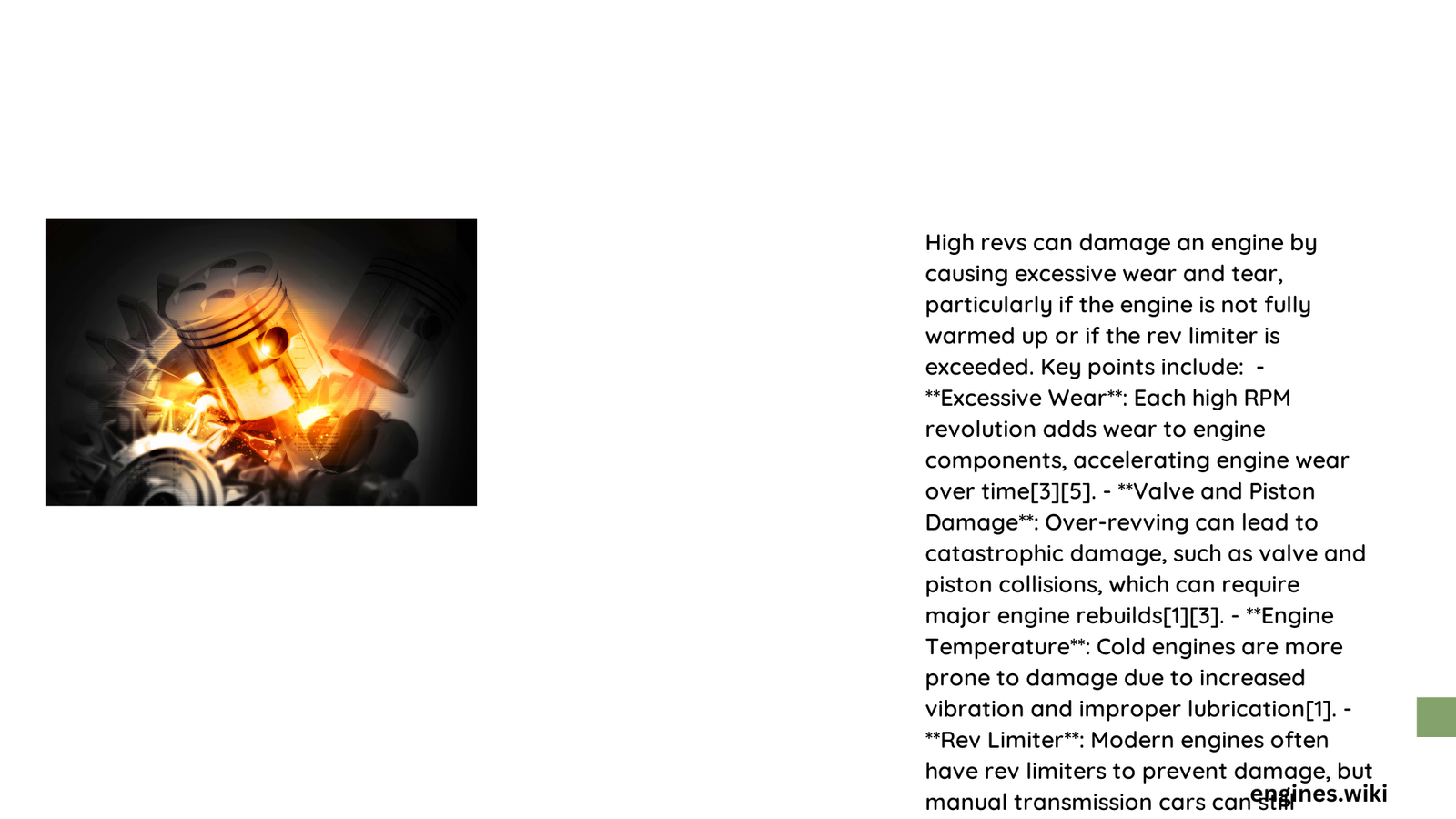High engine revolutions per minute (RPM) can significantly stress mechanical components, potentially causing accelerated wear, increased friction, and reduced engine longevity. While modern engines are engineered to withstand substantial performance demands, prolonged operation at extreme RPM ranges can compromise critical systems like piston rings, bearings, and valve assemblies, leading to premature mechanical failure and substantial repair costs.
What Happens When Engines Experience High RPMs?
How Do Mechanical Components React to Extreme Rotational Speeds?
Mechanical components experience complex stress dynamics during high-speed engine operation. The interaction between various engine parts becomes increasingly critical as rotational speeds increase.
Piston Ring Stress Mechanisms
| Component | Stress Factor | Potential Consequence |
|---|---|---|
| Piston Rings | Increased Friction | Accelerated Wear |
| Cylinder Walls | Higher Thermal Load | Surface Degradation |
| Lubrication Film | Reduced Thickness | Potential Metal-to-Metal Contact |
Key mechanical consequences include:
- Friction Amplification: Higher RPMs exponentially increase component friction
- Thermal Stress: Temperature rises create additional mechanical strain
- Lubrication Challenges: Oil breakdown occurs more rapidly
What Are the Primary Risks of Sustained High-Speed Engine Operation?
Bearing Performance Degradation
Crankshaft and connecting rod bearings experience significant stress during high-RPM scenarios:
- Increased frictional heat generation
- Accelerated material wear
- Potential microscopic surface damage
- Reduced lubricant effectiveness
How Do Different Engine Types Respond to High RPMs?
Naturally Aspirated vs. Turbocharged Engines
Naturally Aspirated Engines:
– More susceptible to mechanical wear
– Limited RPM tolerance
– Higher mechanical stress distribution
Turbocharged Engines:
– Better stress management
– More uniform pressure distribution
– Enhanced thermal regulation
What Preventative Measures Can Protect Engine Integrity?
Critical maintenance strategies include:
- Regular high-quality oil changes
- Using performance-grade lubricants
- Implementing precise maintenance schedules
- Monitoring engine temperature
- Avoiding prolonged high-RPM operation
Technical Recommendations for Engine Longevity
- Use synthetic lubricants with high thermal stability
- Install performance-grade bearings
- Implement advanced cooling systems
- Regular precision engine diagnostics
- Gradual RPM acceleration techniques
Conclusion

While high RPMs can potentially damage engines, proper maintenance, understanding mechanical limitations, and strategic operation can significantly mitigate risks.
Technical Insights
- Maximum recommended continuous RPM: 6,000-7,000
- Critical wear threshold: Varies by engine design
- Recommended cooling: Maintain temperatures below 250°F
Performance vs. Longevity Trade-offs
Aggressive driving demands mechanical compromise between performance and durability. Understanding these dynamics helps preserve engine health.
References:
– SAE International Engine Performance Research
– Automotive Engineering Journal
– Professional Motorsports Technical Publications
